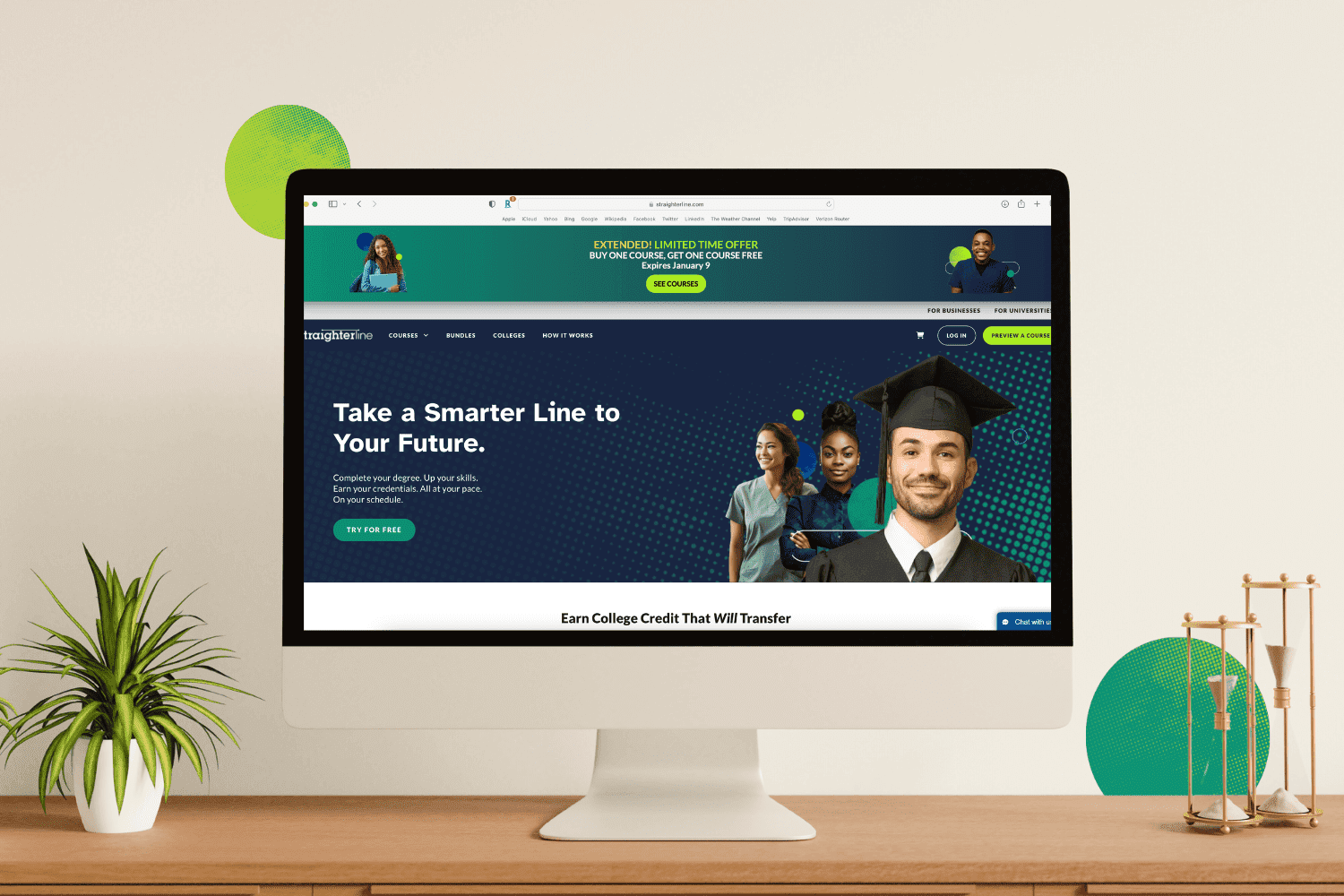DO NOT DELETE THIS SECTION
DO NOT DELETE THIS SECTION
IT & Training Courses
Information Technology Fundamentals
98% pass rate
23 days to complete
3 credits
Introduction to Programming in C++
97% pass rate
29 days to complete
3 credits
Introduction to Programming in Java
97% pass rate
27 days to complete
3 credits
DO NOT DELETE THIS SECTION
Membership Made for Your Goals
When you sign up, your membership (just $99/month) unlocks access to online courses at their most affordable price, as well as tons of features and resources to help you crush it on the path to success.
Your membership renews automatically, and you can cancel at any time.
Your Credits will Count
StraighterLine courses are reviewed and approved by the American Council on Education (ACE), and transfer credits have been accepted by more than 3,000 schools. Colleges and universities look for ACE’s seal of approval when accepting transfer credits from online platforms — making StraighterLine the guaranteed choice for ensuring your credits count.
DO NOT DELETE THIS SECTION
Over 350,000 students have felt the positive impact of StraighterLine
DO NOT DELETE THIS SECTION
IT & Training Resources
DO NOT DELETE THIS SECTION







